A history of the iPad Mini, from life to limbo
Reports suggest that Apple will once again skip releasing a new iPad Mini in the fall event, indicating the product line is likely dead. AppleInsider takes a look back at the history of the iPad's compact sibling.
Apple is expected to unveil a new suite of products in September, with the conventional wisdom emerging that we're going to see three iPhone models. Other media reports, including one this week indicate that Apple will also unveil a refreshed iPad Pro, updates of the Apple Watch and AirPods, and the long-awaited AirPower wireless charger.
But the original report, in its final paragraph, added that Apple will not be releasing a new iPad Mini this year.
After introduction in 2012 and yearly updates for the next three years, Apple's iPad Mini line hasn't been updated since the release of the iPad Mini 4 in the fall of 2015. The lack of noise about a new version would seem to indicate that, even if it hasn't been formally killed off, the product has at least fallen out of favor within Apple.
Also indicating this is the arrival, earlier this year, of a new 9.7-inch entry-level iPad that is not part of the Mini category, but is priced at $329.
The decline of the iPad Mini is consistent with Apple's lack of emphasis, over time, on the iPad itself. iPad sales continually dropped year over year starting in 2013, going from a peak of over 71 million units that year to 67.9 million in 2014 to 54.8 million in 2015 to 45.6 million in 2016. The iPad did show year-over-year growth in the holiday quarter in 2017, but annual sales declined once again.
It's certainly understandable for Apple to move away from the iPad Mini category, as the whole product line, and the size of its offerings, has certainly evolved in the six years since the Mini was first unveiled. But for a time, a product of that size, and at that price point, certainly had a place.
Birth of the Mini
The original iPad arrived in 2010, and in its early years the product often competed with tablets that were smaller than its 9.7 inches. This led to rumors that Apple would go eventually go smaller with the iPad, and two years after the first iPad, they did.
The first iPad Mini was announced in October of 2012 and released the following month. Starting at $329 for the 16GB, Wi-Fi-only version, the first iPad Mini — like all models for the entire line's life — had a 7.9-inch screen.
The original iPad Mini had similar internal specs to the iPad 2, which had been released a year and a half earlier. The new device was announced along with the fourth-generation iPad, as well as new Mac and MacBook lines at an event in San Jose.
The iPad Mini was introduced by asking the question, raised by Apple's Phil Schiller, "what else can we do to help customers find even more uses for iPad, to use it in places they never imagined, in manners they never had before?"
Then, the fourth-generation iPad on the screen behind Schiller rotated, to reveal a smaller one underneath.
"This is iPad Mini," Schiller said. "What can you do with an iPad Mini that can't already do with the amazing fourth-generation iPad? You can hold it in one hand. This isn't just a shrunken-down iPad — it's an entirely new design.
The original iPad Mini shipped with iOS 6.0 and an Apple A5 chip. Its CPU was a 1 GHz dual-core ARM Cortex-A9, with a dual-core PowerVRSGX543MP2 GPU, and 512 MB of RAM. Its display, which infamously fell short of Retina Display, was 1024x768 pixels at 163 pixels per inch.
In our review of the original iPad Mini, AppleInsider wrote that "the iPad mini is not a cheap, low end tablet trying to establish the first rung of a new platform by stretching some existing smartphone apps across a larger screen." We rated it 4.5 out 5, praising "thin sturdy construction," compact size, easy setup and use, and "very good camera," while criticizing the lack of a full Retina Display.
The 32GB and 64GB models of the first-generation iPad Mini were discontinued in 2013, while the 16GB model hung on until 2015.
iPad Mini with Retina Display
The second iPad Mini arrived a year after the first. It was unveiled at a San Francisco keynote in October 2013 — the same event that saw the debut of the iPad Air — and hit the market November 12.
The big change was that the new Mini added a Retina Display, which its predecessor had lacked, bringing the display up to 2048x1536 pixels at 326 ppi. There was also a higher price point, as the second iPad Mini started at $399, compared to $329 for the first. The new version also offered a 128GB size, while the original maxed out at 64GB.
The second-generation Mini shipped with iOS 7 and featured an A7 chip. and its CPU was 1.3 GHz dual-core Apple Cyclone while its GPU was the Quad-core PowerVR G6430. It also offered 1024 MB LPDDR3 of RAM, doubling that of its predecessor.
In our review, AppleInsider called the second iPad Mini "an impressive technical achievement, but one that comes at a greater cost to customers.
"While Apple got almost everything right with the Retina iPad mini, there is a catch. The cost for every model has increased by $70 from last year's prices. The starting price for the iPad mini with Retina display is now $400," we added. "Frankly, we feel the relatively premium pricing on the Retina iPad mini is worth it, though Apple does get dinged for being considerably more expensive than the competition."
The 2013 device was known outwardly as "iPad Mini with Retina Display" until the arrival of its successor, at which point Apple began referring to it as "iPad Mini 2."
The 64GB and 128 GB versions were discontinued when the Mini's successor arrived a year later in October 2014. The 16GB version lasted until 2016, while the 32GB size wasn't discontinued until 2017.
iPad Mini 3
In keeping with the tradition, the third iPad Mini — called iPad Mini 3 from the start — was unveiled at a keynote in October, although it hit the market only six days later, on October 22, 2014. The third-generation device was introduced at the same event as the iPad Air 2, as well as a new iMac and the release of OS X Yosemite and the Apple Watch app development kit.
The iPad Mini 3 for the first time offered the Touch ID fingerprint sensor and Apple Pay. It was also available in gold, when previous editions had not been. It shipped with iOS 8.1.
However, the third Mini didn't move the needle significantly from the previous year's model. It once again started at $399, while coming in 16GB, 64GB and 128GB storage capacities, omitting the 32 GB of the two previous versions. The Mini 3 maintained the A7 chip, the Retina Display, the 1.3 GHz dual-core Apple Cyclone CPU and the Quad-core PowerVR G6430 GPU, as well as the 1024 MB LPDDR3 RAM from the second generation.
In our review, AppleInsider praised the Retina Display again, as well as TouchID and Apple Pay support within apps. We added that the new Pad Air 2 offered many more advancements for just $100 more.
"While some critics have scoffed at iPad mini 3 for offering nothing more than greater capacity options, Touch ID and a gold color option, it's also important for users to recognize that additional storage and Touch ID can't be purchased later at any price," we said. "At the same time, if those features appeal to you, you should also at least consider iPad Air 2, which sweetens the pot in a number of areas alongside its larger display."
All models of the iPad Mini 3 were discontinued in 2015, when its successor arrived.
iPad Mini 4
The fourth iPad Mini, the last one introduced to date, made its debut at Apple's "Hey, Siri" event on September 9, 2015, and arrived on the market the same day. It shared an introduction with the iPhone 6s and iPhone 6s Plus, the original iPad Pro, as well as a new Apple TV and new Apple Watch finishes. That year, Apple opted not to hold separate events in September and October, leading to a crowded September keynote.
While it was a more notable upgrade than the third-generation had been, the iPad Mini 4 introduction was far from the most prominent introduction by Apple that day. In fact, it was only mentioned in passing at the end of the keynote's iPad section.
All Phil Schiller had to say about the new iPad Mini 4 was that "we've taken the power and performance of iPad Air 2 and built it into an even smaller mini enclosure, it's just .65 pounds. Incredibly powerful, and yet small and light." iPad Mini 2 became the new "entry-level iPad," starting at $269.
The iPad Mini 4 started at $399, once again coming in 16GB, 64GB, and 128GB sizes, and it shipped with iOS 9. It sported an A8 chip sporting the 1.5 GHz dual-core Apple Typhoon, coupled with a was Quad-core PowerVRGX6450 GPU. Its memory of 2048 MB LPDDR3 RAM doubled that of the previous two Mini versions. The new iPad Mini also featured an updated 8-megapixel rear camera.
The screen was once again Retina Display but added a fully-laminated display. And while it was had same screen size as previous Mini models, the iPad Mini 4 itself was taller, thinner and lighter than its predecessors
The 16 and 64GB iPad Minis were discontinued in the fall of 2016, despite the lack of a new Mini model. The 128GB iPad Mini 4 is now the only iPad Mini still in production. The iPad section on Apple's website continues to list the iPad Mini as an active product.
As of early 2016, the Mini was the highest-selling iPad device, according to Consumer Intelligence Research Partners research at the time.
The Mini legacy
We don't know for a fact that the iPad Mini is dead. A rumor in May 2016 had Apple phasing out the category altogether, as iPhones got larger and cannibalized iPad Mini sales. But Apple has not announced any such moves, and continues to sell the Mini 4.
The largest iPhones from the last two generations haven't been that much smaller than the iPad Mini, and rumors about the 2018 lineup have iPhones getting even bigger. And if the bigger iPhones aren't cannibalizing iPad Mini sales, then the 2018 "budget" iPad, at $329, probably is.
The problem with the iPad Mini was never that it wasn't good enough. It's a perfectly adequate entry-level device. My kids got them, having never used any type of computer before, and its smaller size makes it an ideal product for smaller people with smaller fingers.
But if the business doesn't make sense for Apple, and the iPad Mini has been cannibalized so much by iPhones at the bottom and larger iPads at the top, it's hard to blame Apple for not committing to the Mini category.
 Stephen Silver
Stephen Silver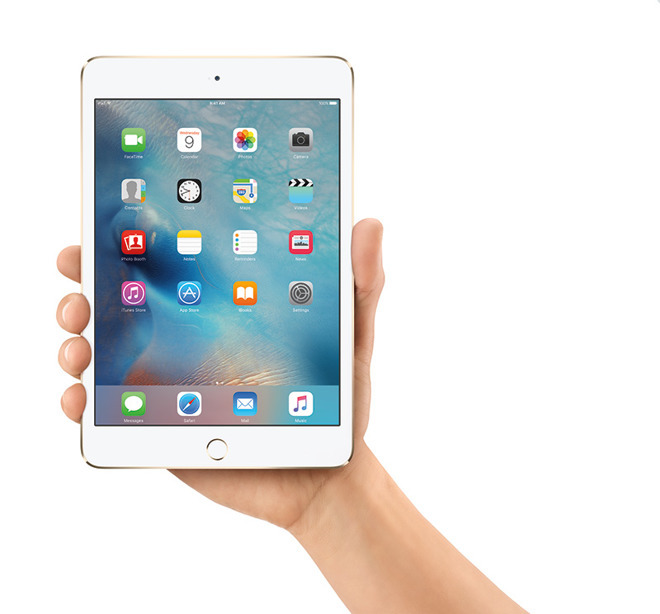

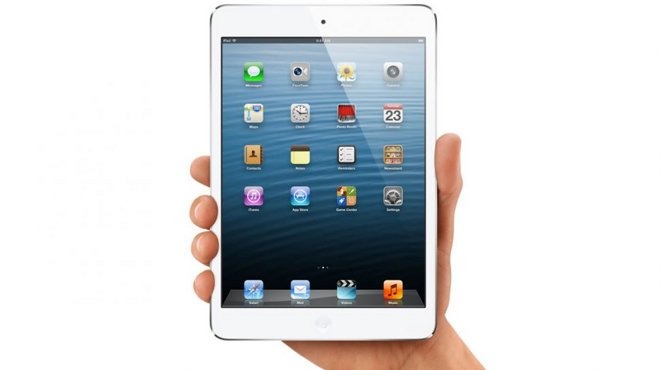
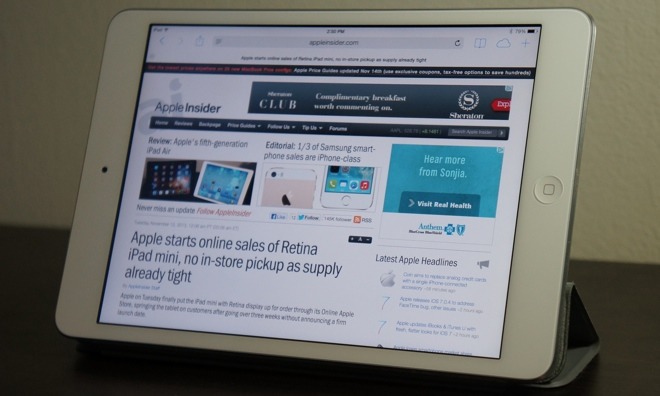
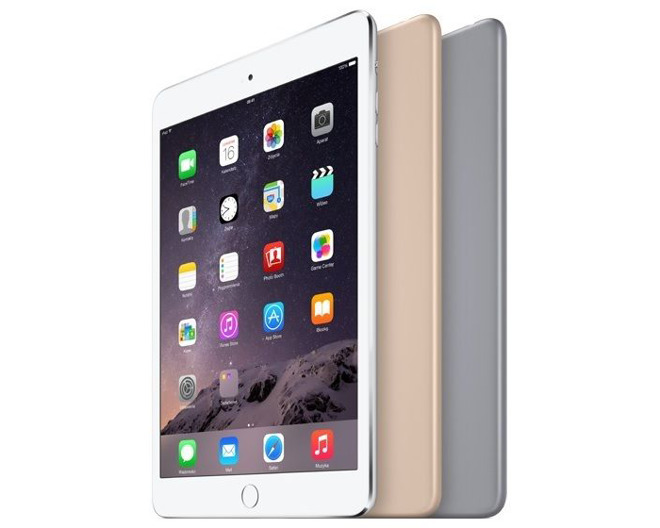
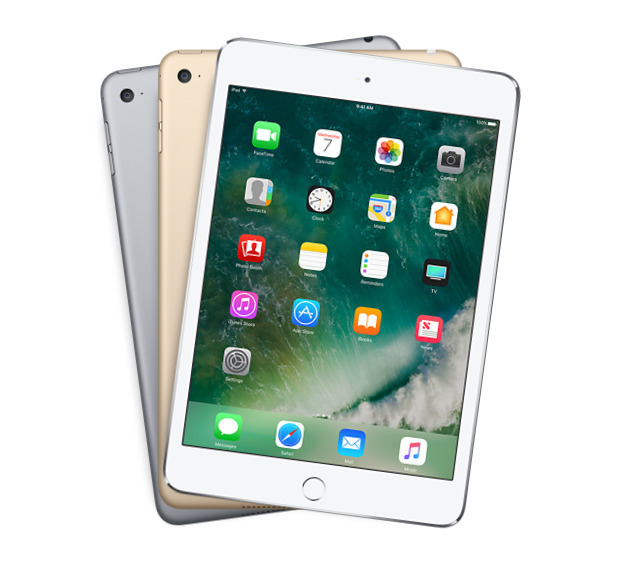











 Malcolm Owen
Malcolm Owen
 William Gallagher and Mike Wuerthele
William Gallagher and Mike Wuerthele
 Christine McKee
Christine McKee
 William Gallagher
William Gallagher

 Marko Zivkovic
Marko Zivkovic









